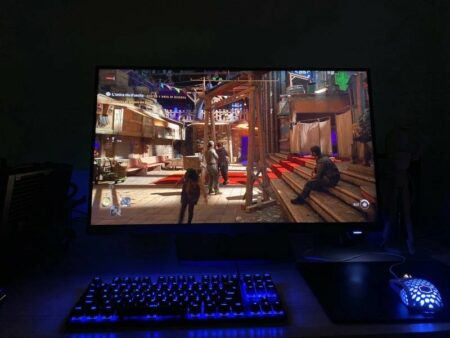CONS
- Square-shaped stand may not be ergonomically friendly for all gamers
- Oversaturated color out of the box
- Slightly higher dE values than average
MSI OPTIX MPG321UR-QD SPECS
| Panel Size (Corner-to-Corner) |
32 inches |
| Native Resolution |
3840 by 2160 |
| Aspect Ratio |
16:9 |
2021 marked the year when 4K resolution became mainstream in gaming monitors. In 2022, the focus is on enhancing color quality with the help of quantum dot technology, as seen in displays like the. MSI Optix MPG321UR-QD. While QD-backed panels have made appearances before, this year’s second-generation options, such as the award-winning Alienware 34 QD-OLED, are truly hitting their stride. The MSI Optix impressed with its exceptional color accuracy and sharp visuals, making it a top choice for gamers seeking a high-performance 4K monitor. If you want a monitor that excels in both style and functionality, the MSI Optix MPG321UR-QD is the standout choice for 2022.
All except the…
The MPG321UR-QD is a 27-inch monitor that boasts UHD resolution of 3,840 by 2,160 pixels and a refresh rate of 144Hz. This monitor utilizes a QD-IPS panel, which incorporates quantum dot technology. Quantum dot technology has gained popularity in the display industry, starting from its introduction in HDTV sets and now making its way into the monitor market. By incorporating a thin layer of microparticles, QD technology enhances the color accuracy and brightness of any panel type it is applied to.
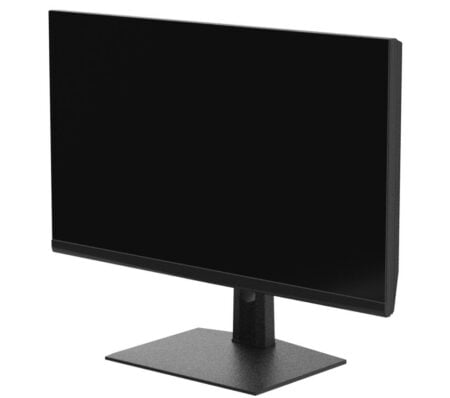
It has only been a week since we evaluated the QD-OLED-based Alienware 34, an excellent monitor that showed significant improvements over the non-QD Alienware 55 OLED from 2019. It is important to note that while it may be tempting to directly compare the new MSI and Alienware monitors due to the presence of “QD” in their names, one should always prioritize considering the underlying panel type first and then decide if QD is a necessary addition. If you are seeking the deep blacks and high contrast of OLED technology, simply adding QD to an IPS panel may not meet your expectations. On the other hand, if you are looking for exceptional gaming performance similar to what many Rapid IPS and Fast IPS screens offer, quantum dot technology will enhance the visual quality of your games without affecting the response time of the pixels.

Upon examining the design of Optix, I am truly amazed by the advancements that MSI has made in its high-end monitors over the past few years. Although models such as the 2019 MSI MPG341CQR were highly acclaimed at the time, the build quality of the company was lacking. Nevertheless, significant improvements have been made since then, and the inclusion of a metal badge on the rear gives a pleasant impression that MSI is now placing greater emphasis on both design and craftsmanship with its latest range of monitors.
The Optix MPG321UR-QD comes with a compact square metal stand that offers three adjustable options. It can be tilted from -5 to 20 degrees, swiveled left and right from -30 to 30 degrees, and has a height adjustment of 3.93 inches. If you are in search of a 4K monitor that can switch between landscape and portrait mode.
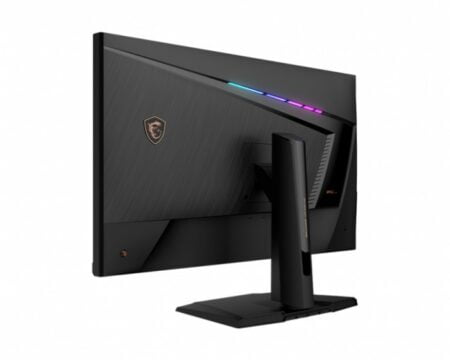
The Optix’s rear is composed of a smooth black plastic material, showcasing the familiar MSI design elements. To begin with, the MSI logo is adorned with RGB lighting, allowing you to customize it using the onscreen display (OSD) menu and the five-way joystick located at the back. Alternatively, you can also utilize MSI’s Gaming OSD Windows software to personalize the lighting effects.
From this point, you have access to a wide range of features that the Optix offers (pun intended), and what an impressive display it possesses. The company has managed to incorporate every possible feature that one could imagine in a modern gaming monitor, including but not limited to OSD-level crosshair placement and adjustment, a scope magnifier with three different settings (1.5x, 2x, and 4x), a fully integrated KVM that supports up to three independent inputs, a six-hue calibration menu, black boosters, blue light protection, and MSI’s Sound Tuner service to enhance the game audio of pass-through devices. We could continue listing more features, but you understand the extent; the only thing that is missing is the kitchen sink.

The Optix, marketed as an “Xbox Edition” monitor, primarily caters to Twitch or YouTube streamers who utilize dual-PC setups. However, it also offers the advantage of simplifying the management of a console and PC connected to the same monitor. The choice of playing with a console despite having a capable gaming PC nearby is subjective and depends on individual preferences and the nature of their lifestyle and workspace.

The MPG321UR-QD is equipped with a plethora of ports for various connectivity needs. It features two HDMI 2.1 ports, a DisplayPort 1.4b input, a USB Type-C port compatible with DisplayPort signals, and a total of nine USB 2.0 ports (six Type-A and three Type-B). Additionally, there are two Type-B downstream ports conveniently located on the side, along with a 3.5mm headphone jack for HDMI audio pass-through, a mic-in port, and an audio combo jack.
The Optix: QD-IPS reigns supreme in 2022 as the top performer.
Stated earlier, the 4K monitor showcases an IPS panel with a native refresh rate of 144Hz. (No support for refresh-rate overclocking.) We conducted tests on the MSI Optix MPG321UR-QD using a Klein K10-A colorimeter and a Calman Ultimate 2021 R4 for our standard gaming-monitor evaluations. Here are our findings…
When evaluating the default picture mode of the display using an SDR signal, the Optix achieved a peak brightness of 423.8 nits (its rating is 400 nits, indicating a positive outcome) and a black level of 0.33 nit, resulting in a contrast ratio of 1,284:1. This performance is outstanding for a gaming monitor and demonstrates the display exceeding its specified contrast ratio of 1,000:1.
HDR testing revealed a peak brightness of 623.5 nits, surpassing the HDR 600 standard once again. Understanding the actual brightness of your HDR monitor is crucial, especially for games like Forza, where you can adjust the brightness level that the game transmits to the monitor through HDR metadata. This feature ensures that the game does not overexpose the image’s brightness if you exceed the limit, while also ensuring that you are maximizing your panel’s performance when calibrated accurately.
The HDR assessment demonstrated a maximum brightness of 623.5 nits, once again exceeding the HDR 600 benchmark. It is essential to be aware of the true brightness of your HDR monitor, particularly in games like Forza, where you have the option to adjust the brightness level that the game communicates to the monitor through HDR metadata. This functionality prevents the game from excessively brightening the image if you surpass the limit, while also ensuring that you are utilizing your panel’s capabilities to the fullest when properly configured.
MSI’s Optix MPG321UR-QD boasts quantum dot technology integrated into its Rapid IPS panel, a key selling point for the monitor. Quantum dot technology enhances color brightness and coverage, surpassing our initial expectations during testing.
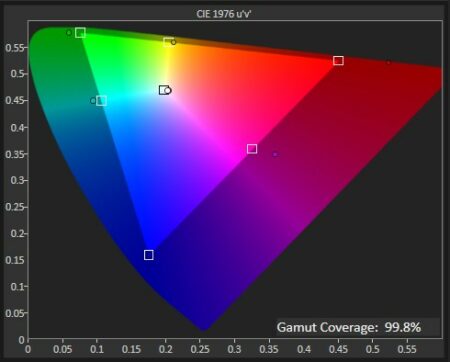
The Optix demonstrates exceptional color accuracy with 161.3% coverage of the sRGB gamut, 99.8% of Adobe RGB, and 94.6% of DCI-P3. These figures are among the best in the industry, making it a strong competitor against other top gaming monitors. Despite a slight setback in HDR performance, the Optix remains a formidable choice, comparable to models like the Corsair Xeneon.
Following the impressive color coverage results, it was unexpected to see MSI’s relatively high Delta E average of 3.39 in color-accuracy testing.
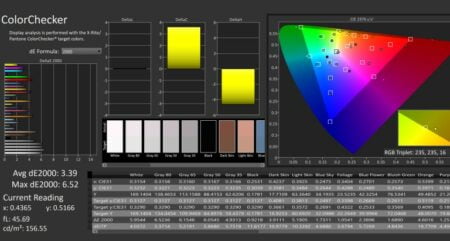
It is possible that the OSD’s six-hue saturation sliders could potentially reduce this number, but we do not manually calibrate for gaming monitor evaluations. The recorded readings provided are based on the Standard image preset at 75% brightness, straight out of the box.
Performance in Media and Gaming.
After completing the quantitative testing, we proceeded to assess the subjective content and gaming performance. The 4K Costa Rica test footage in SDR, output at 4K to align with the monitor’s native resolution, appeared exceptionally impressive. Within moments, it was evident that this was one of the finest SDR implementations on a gaming monitor that I had encountered. I was eager to evaluate how the Optix performed when scrutinized under HDR conditions.

AAA games such as Red Dead Redemption 2 appeared exceptional in both HDR and SDR, due to MSI’s impressive contrast ratio and high brightness levels. Nonetheless, a common issue with many gaming monitors is that they come pre-calibrated with saturation levels that I find excessive. Although this may provide a competitive edge in specific games like Valorant, it can result in all beloved characters appearing as if they have just come out of a long night of partying, with flushed red faces all around.
AAA games like Red Dead Redemption 2 looked outstanding in both HDR and SDR, thanks to MSI’s robust contrast ratio and high brightness levels. However, a common problem with many gaming monitors is that they are calibrated with saturation levels that I believe are too high. While this may offer a competitive advantage in certain games like Valorant, it can cause all your favorite characters to appear as if they have just finished a 24-hour party, with flushed red faces everywhere.
Upon initial inspection, the Optix may appear to have this issue, however, it is equipped with numerous color presets and additional features. This includes the ability to adjust the display manually to achieve your desired saturation levels. After fine-tuning these settings, SDR content appeared more vibrant, and HDR content truly stood out.
Upon first glance, the Optix may seem to have this issue, but it actually offers a variety of color presets and features. This includes the ability to manually adjust the display to your preferred saturation levels. After making these adjustments, SDR content appeared even more vivid, while HDR content truly stole the spotlight.

Forza Horizon 5 and Elden Ring are two remarkable games that showcase stunning visuals. While Forza Horizon 5 supports native HDR, Elden Ring utilizes Auto HDR. Both games looked incredibly impressive, especially when played on the MSI gaming monitor. If you’re seeking a gaming experience in 4K HDR, I can’t think of any other monitor that provides the same level of responsiveness and visual quality as the MSI.
When it comes to responsiveness, we evaluated the traditional input delay (the time it takes for a monitor to receive a signal and update the screen) using an HDFury 4K Diva HDMI matrix. Running a 60Hz test signal, the MPG321UR-QD proved to be another IPS-based panel that pushed our hardware to its limits, showcasing an input delay of just under 1 millisecond.
MSI Challenges Competitors with the QD-IPS Technology.
The MSI Optix MPG321UR-QD stands out with its exceptional gaming performance, stunning color reproduction, and durable construction, positioning it as one of the top contenders in the high-refresh 4K market this year. Although the Alienware 34 QD-OLED boasts impressive panel technology, the integration of Fast IPS and a quantum dot layer in a single display demonstrates the maturity of IPS technology in delivering optimal visual experiences.

Combine the exceptional panel quality with the extensive range of additional features and customization options that MSI has incorporated, and you will discover a gaming monitor that is equally suitable for your PC as it is for an Xbox Series X or a PlayStation 5. Despite its focus on Xbox, it is important to note that this is a 4K gaming monitor that caters to all gaming platforms.
At a price that is slightly higher than the previous year’s 1440p Fast IPS models such as the Gigabyte Aorus FI32Q, the MSI Optix MPG321UR-QD offers a promising glimpse into the future of more affordable 4K options. This display signifies the end of compromising on 4K gaming, as it delivers exceptional performance comparable to its lower-resolution counterparts. With the MSI Optix MPG321UR-QD, you can finally have the best of both worlds.


